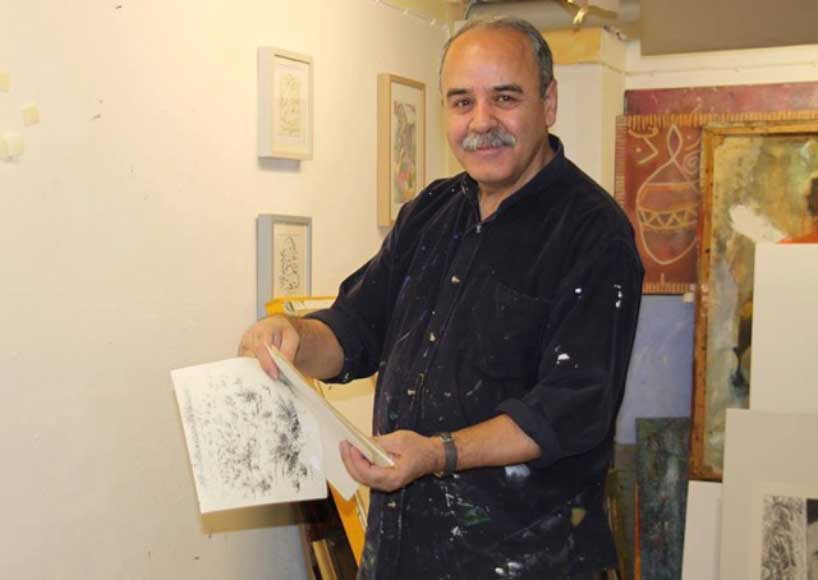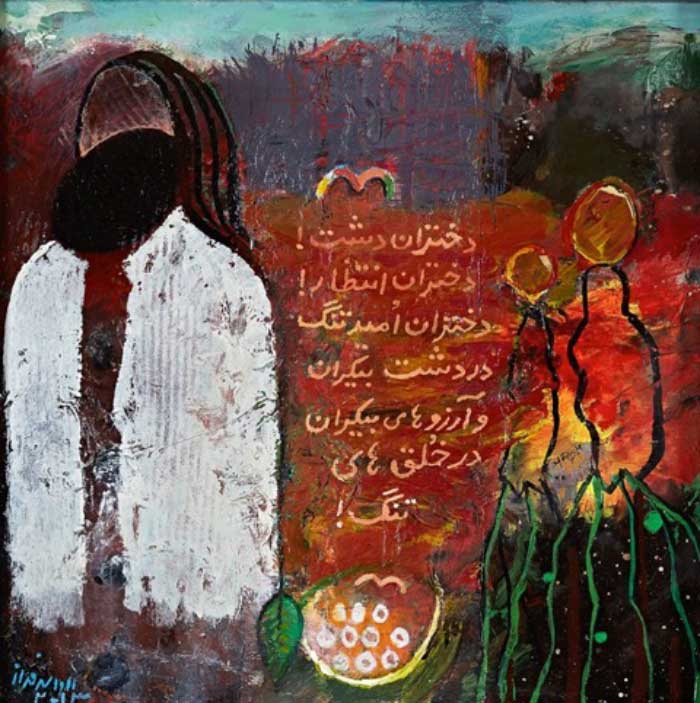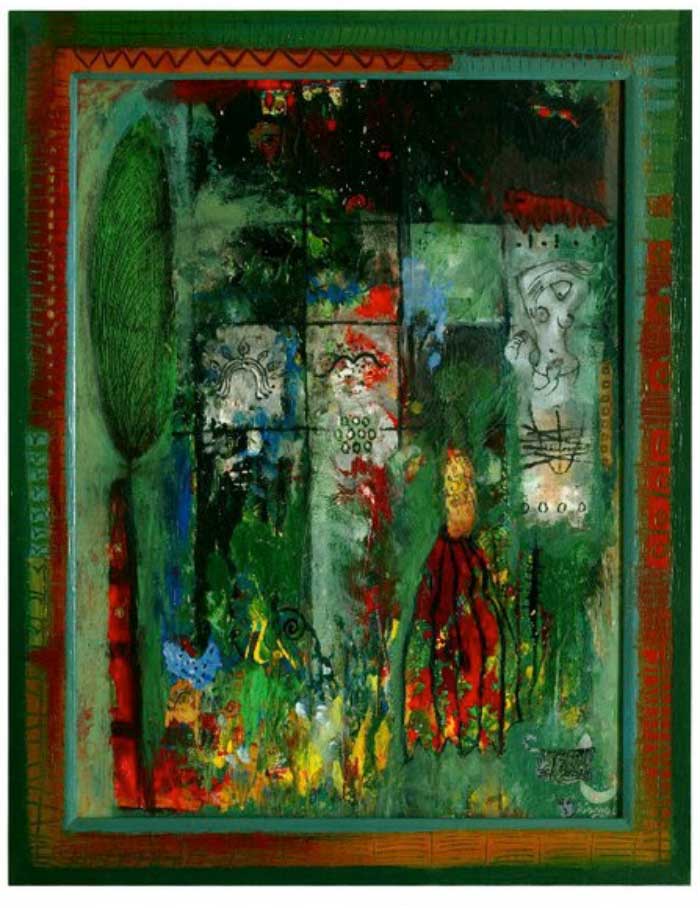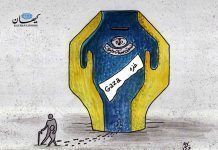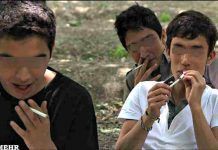April 15, 2018
By Behjat Omid
The Osthaus-Museum Hagen in North Rhine-Westphalia, Germany has opened an exhibition of more than 100 drawings and paintings by the Iranian artist Davoud Sarfaraz. The show, which ends May 13, is part of the annual Hagen Art Festival organized by the city to promote multiculturalism.
Sarfaraz fuses his appreciation of Western aesthetics with his commitment to Iranian culture. He uses traditional Persian calligraphy as a tool to “build a bridge between the East and the West.”
This is Sarfaraz’s fifth solo show. He has exhibited his works in group and solo shows at various galleries in the North Rhine-Westphalia state. Most of the drawings and paintings at the Osthaus-Museum Hagen will be on display for the first time.
Sarfaraz graduated from Tehran University School of Art, and has been living in Germany for the past 32 years. The following is Kayhan London’s interview with Sarfaraz.
Behjat Omid: Why has the Osthaus-Museum Hagen given you a solo show?
Davoud Sarfaraz: It was a miracle and pure luck that they offered me a show. I own a restaurant in Dortmund. One night, a “multicultural group,” as they called themselves, booked a table for dinner. The head of the group was a female German graphic artist. She went through my 2015 exhibition catalog with great interest. She couldn’t believe that a professional artist was operating a restaurant to support his family.
We spoke at length about art and my work. She scheduled an interview with me at a later date. She also asked if she could include some of my works in a book entitled “Du+Ich=Wir” (You+Me=US) which promoted integration. I gave her a book as a gift. Shortly after the interview, she came back with unbelievably good news. The curators of the Osthaus-Museum Hagen had offered me a solo show as part of the 2018 annual art festival.
Q: Is the increased use of poetry and calligraphy in your recent work due to your profound commitment to Iranian art and literature? Or are there entirely different reasons for that?
A: All art forms have the same root. Poetry, music and visual arts complement each other. Persian miniatures would be incomplete without poetry and calligraphy. The use of poetry and calligraphy in my work is not the result of a deliberate and conscious decision but an ongoing instinctive and intuitive process. I use poems that I feel would complement the images in my paintings and vice versa.
Q: How do you view the technical development and the evolution of your work?
A: It is somewhat complicated. I experimented with various techniques in university before deciding to work in representational style. My painting “People’s Movement” is an excellent example of this period. But I wasn’t quite satisfied with the results. I decided to forget everything I had learned when I moved to Germany in 1987. After a few years, I was able to develop my particular style. My current work is an honest and accurate expression of my inner world.
Q: The people in your paintings are isolated and lonely. Has your experience as an immigrant formed your view of human relationships?
A: I was depressed during my first few years in Germany. I felt alienated and lonely, especially in the second year, when my father died. That was a horrible experience. I also had fears that stem from my childhood experiences in Iran. I had painful memories of the Iran-Iraq War. But I kept a flicker of hope alive in my heart. I was able to confront my fears by painting images of myself. The massive blue areas in my canvases helped to expose and dispel my worries. Painting helped me get through this challenging period in my life.
Q: Has German culture made any contribution to your work?
A: I discovered the artist within me in Germany. I’m pleased about that. But it wasn’t easy to get here. I had to work hard for many years before arriving at this point in my life. The hardship I endured here outweighs the social gains.
I’ve always had to work for a living. I understand and deeply respect German culture. I’ve never abandoned my art. I’ve been more professional and productive than many other artists who have been living on the fringes of this society.



